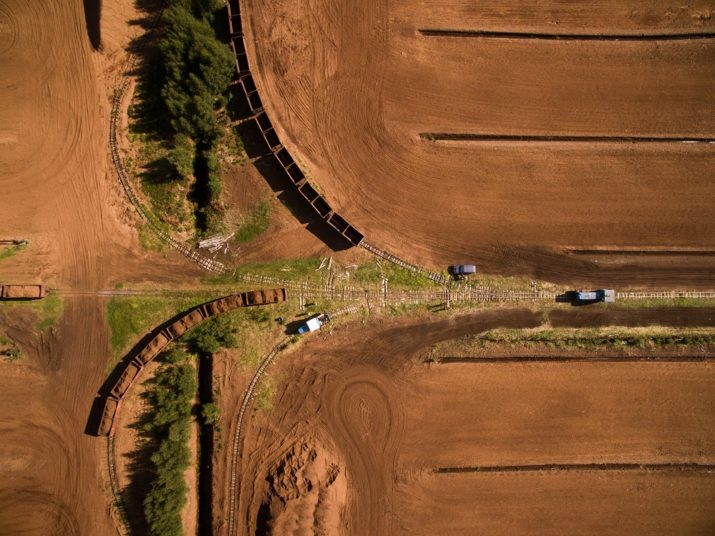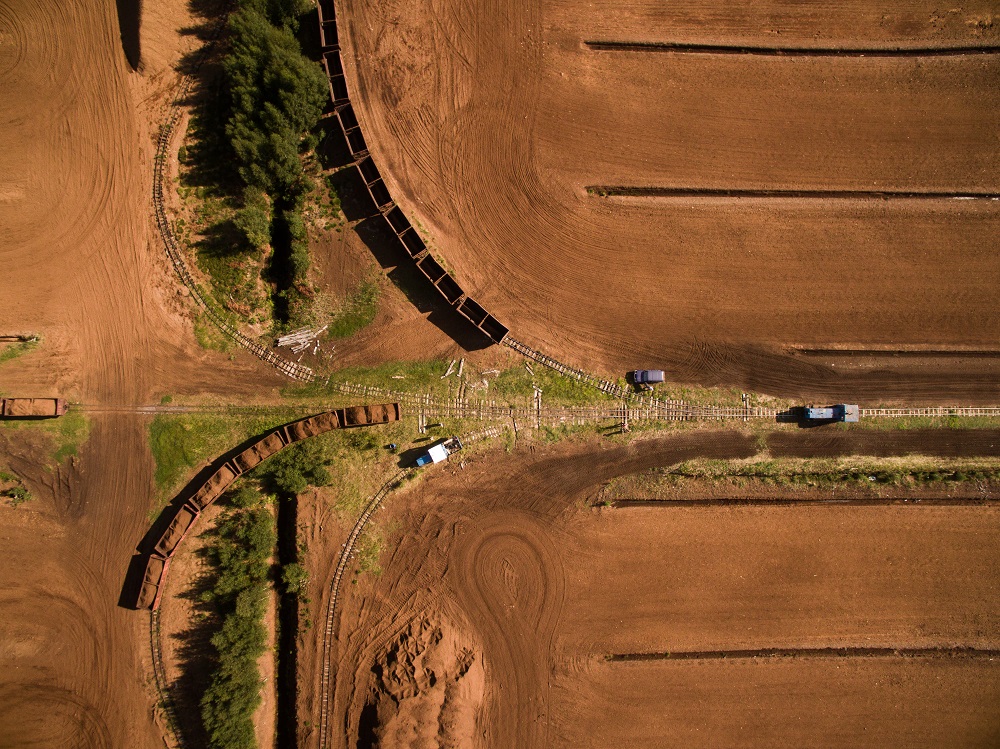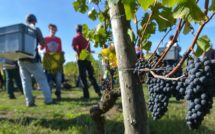

This is part of our special feature on Food, Food Systems, and Agriculture.
In East-Central Europe, from Finland in the north to Greece in the south, more than half of the population was still dependent on agriculture and forestry at the outbreak of World War II.[1] In this area, the Baltic countries used to be called “agrarian” or “peasant states.” Still, apart from short periods, politics was not geared to the interest of agriculture. Instead, their geopolitical position, a term which is widely used today, seems to have had a decisive influence; the twentieth century was no exception.
Historically, the fate of the Baltic realm has been difficult. It served as a kind of Middle East of the North; inhabited by small ethnic groups with larger neighbors, which tended to play out rivalries fighting about their territory. German feudal lords, knights and barons, were a heritage from the crusades in Latvian- and Estonian-speaking areas in the thirteenth century. Many wars followed the crusades; Danish, Polish, Swedish, and finally Russian armies took control, leaving the German feudal lords in place. Lithuania and Poland built a large and loose empire in the seventeenth and eighteenth centuries, spreading between the Baltic Sea and the Black Sea. While this empire decayed, the mainly Polish-speaking landlords remained. This was the situation as the modern transformation of agriculture started.
From serfdom to family farming 1860-1940
They were the westernmost governments of tsarist Russia, with the land divided into large demesnes, belonging to Baltic German or Polish barons and cultivated by serfs, working estate lands as well as subsistence farms; the classic arrangement of second serfdom in East-Central Europe. Farming was extensive—a large part of the harvest was distilled to vodka for the Russian empire. In the nineteenth century, the Baltic realm slowly started to change, distilleries were not profitable enough for the life-style of the barons. Serfdom was becoming obsolete, reforms were discussed. In the beginning of the century, formal serfdom was abolished along with corporal punishment, leaving the land to the nobility. The serfs had little choice but to go on working on manor land in exchange for a subsistence farm. Not much changed.
In the 1860s, large-scale peasant rebellions shook the Habsburg empire in the south, emphasizing the need for change. The situation of the peasantry and the labor rent were at stake. Simultaneously, the rebellion against foreign lords led to an upsurge of national aspirations. A little later, these movements reached the western part of the Russian empire. In the Baltic governments, campaigns to buy land and organized nationalism developed hand in hand in peasant associations that were formed in late nineteenth century. Politics and economy were strongly interrelated, and esthetic ideals shifted towards peasant romanticism.
In 1905, the Russian revolutions in the area started with rebels burning manors, particularly in the central parts of the Baltic area. Land-to-the-tiller reforms and partial autonomy were called for. But in the October revolution of 1917, peasant demands were neglected. The Bolshevik party decided against land partition and wanted to keep large-scale estates as collective farms. The landless population of the Baltics turned away from their revolution. Indigenous nationalist leaders on the other hand, promised land reform through expropriation of the Baltic German landowners, and land to anyone willing to fight the Bolshevik revolution. There were no other means to pay for soldiers. In the civil war and turmoil on the Russian border at the end of World War I, Estonia, Latvia, and Lithuania, led by nationalist leaders, gained independence in 1918, confirmed by a separate peace treaty in 1920.
Land reform was high on the political agenda in the entire Eastern European area. In the Baltics, the reforms were more radical than elsewhere, as they could use the land of German landowners. Small family farms were formed, and there were measures to avoid too much fragmentation. They organized cooperative processing, banking, and sales organizations. Farm exports and sales of forest products became the mainstay of foreign trade in the interwar period. Overseas grain was cheap in Western Europe, but dairy products and meat, products of intensive farming suitable for family farms, were in demand both in Britain and Germany. It was called the Danish model in the Baltics, and it was modestly successful.
The 1930s depression hit hard at the “peasant states.” Exports dwindled and poverty led to social unrest in the cities. The nationalist governments had feared Soviet intervention; in the crisis, paramilitary organizations on the extreme right wing became another threat. Nevertheless, economic crisis was blamed on liberalism, and economic nationalism was favored. Authoritarian rule replaced new and insecure democratic institutions in many places, also in the Baltic states. In Lithuania, the government had curtailed democratic institutions in the 1920s; in 1934, Estonia and Latvia followed suit. The state took hold of the cooperative organizations, banned paramilitary bands and fascists; the communists were already in prison. As Germany negotiated bilateral agreements to buy provisions in Eastern Europe, as part of the armament campaign of the Nazi regime, in the late 1930s, the economic situation became brighter – for a while.
From family farming to collective farms 1940-1990
World War II was disastrous in this area. Timothy Snyder named it Bloodlands in a well-known book. Volumes have been written about the double occupations of Stalin and Hitler, the mass murders, and the retaliations each new occupant embarked on. When the Soviets forcibly annexed the Baltic states in 1940, land was nationalized along with other assets. A land reform split the farmland in smaller pieces to all the landless people. When the Nazi army marched in summer 1941, land was not returned to the farmers, as they maintained plans for German settlement in the area. Fall 1944, the Red Army returned after furious fighting, the Baltic states became Soviet republics.
Farmers continued to cultivate what was left of their farms as tenants. Few participated in the mass exodus that took place before the renewed Soviet occupation. A new regime was installed, according to the Soviet nationality policy with ethnic Estonians, Latvians, and Lithuanians at the top, supported by second secretaries and commissars from the center. To begin with, collectivization was voluntary; few collective farms were formed in spite of subsidies. By 1947, the regime lost patience with slow collectivization and the difficulties to extort produce from small holdings. A campaign in favor of collective farms and against the kulaks started. The kulaks, according to propaganda, were the agrarian bourgeoisie, exploiters of the peasantry; the regime considered them the obstacle to collectivization. This was nonsense. There were no large private farms (normally owners worked the land except when old or ill). Nevertheless, a hunt for kulaks went on for a year and a half, and ended with the deportation of a large part of the farmers, in Estonia and Latvia in one wave in March 1949, in Lithuania in several waves the same spring. The deported farm families arrived, after a terrible journey, in Siberian collective farms with need for labor power, in time for the spring sowing campaign. The remaining people in the Baltic countryside flung themselves into collective farms to escape the terror.
The campaign followed the pattern of Soviet collectivization in 1929-30. But it also hurt national feelings, and so it is remembered today mostly as deportations to distant, desperately poor and alien Siberia. After the death of Stalin, first labor camp inmates, later deported farmers, could get permission to return home. In the general mood of suspicion, they were not welcomed, which brought them additional hurt. Returned kulak families sometimes gathered in collective farms of their own, forming well-tended and closed communities.
After some years of near starvation, the collective farm system settled down. They merged into larger units over time. Kolkhoz leaders became the power holders of the countryside, managing practically all the resources in the neighborhood. If the leaders were knowledgeable and thrifty, the collective farm and the village could prosper. But if political merits trumped agricultural and organizational skills, the whole neighborhood would suffer.
Huge stables, barns, dairies, and mills were built for the collective farm herds. Farm implements (always a weak link; tending to break down in the busy season) were manufactured with a view to enormous fields. The workers in the collective farms became specialized with regard to skills, as opposed to the many tasks of a family farm. Farming skills were still upheld through private plots allotted to the farm families. The collective farm would provide help with plowing, transports, etc. on the plots. The kolkhozes built housing with several stories, suburban houses with running water and WCs, in the middle of the fields, for the laborers. High culture was valued, collective farms used ancient buses to transport members to the theatre and other entertainments. Still in the late1980s these smelly vehicles would turn up like museum exhibits in the parking lot of the opera house or drama theatre.
Decollectivization – from fish soup to aquarium
To make fish soup out of an aquarium is relatively straightforward – but how do you reverse the process in a new context? The joke was frequently used for what took place after the collapse of communism. By the end of the 1980s, the Soviet Union disintegrated. A new agrarian policy was due, decollectivization started over the whole Eastern European area. Again, the policy of the Baltic countries was more radical than most. Polish agriculture was not entirely collectivized, the other People’s Republics took economic limitations more seriously. But the Baltic states did not wait, they quickly declared collective farms illegal and started land reform. Land was to be restituted to the former owners of 1939, although it was clear that 10-30-hectare farms were not viable. The important issue was to assert the unlawfulness of Soviet occupation. To make this point, changes made under Soviet rule were declared not valid. Nationalization or collectivization of land and assets was undone, so that continuity between the Baltic states in summer 1940 and 1991 could be established.
It was not easy to invalidate 50 years of development. The former owners were dead or retired and their heirs had to be sought out. They had to find old deeds and documents of ownership, so that archivists had busy days. Even the descendants of owners who had fled Soviet rule were included, in the cases of Estonia and Latvia. When restitution was impossible, they would get compensation. What was obvious from the start is that the process was going to be long and consume a lot of administrative resources. For agriculture, it meant a ten-year period of uncertainty. Immigrants from the Soviet Union who had moved to the Baltics after World War II were excluded from the land, which was considered a merit at the time.
Surprisingly little has been written about this messy period. Agrarian economists and agronomists abroad were equally puzzled. When economic considerations and production consequences of the abolition of collective farms were not the aim, what was there to say? In that sense, decollectivization was not unlike collectivization. Ethnological studies have been the most instructive and interesting, but few are available in foreign languages. OECD and other international bodies made surveys and comparisons without much detail, some conferences were held. From them it is possible to see that the agrarian policies of the Baltic countries were radical. Decollectivization in other countries went in the same direction but took more time, was less absolute and could, at least in theory, take more advantage of existing assets and well-functioning farms.
Restitution of land was one process; collective farms were declared unlawful in another process. In Estonia, each farm could decide the exact procedure to distribute assets except land. In Latvia, collective farms first transformed to joint ventures in a legal sense. In Lithuania, unlike Estonia and Latvia, there were some provisions for large farms that wanted to go on working. Normally, each worker would get vouchers corresponding to his or her working time in the kolkhoz. These vouchers could be used to buy assets or sold. Most people bought their home – the vouchers were not enough to buy apartments in cities. The rest was sold to enterprising neighbors, often to surprisingly low prices. Saving for the longer term did not appeal to people who, under Gorbachev’s monetary reforms, just had lost all savings. No one had a reasonably trustworthy picture of the future. In this way, land and productive assets were privatized in different procedures, making life harder for those who wanted to go on cultivating land.
Mismanagement and theft were frequent. What was there to do except to make fun of it all? In the Estonian language, privatization is called erastamine—only one letter away from ärastamine, to do away with. A kind of Monopoly game called Ärastame Eestit (Make assets disappear in Estonia, in approximate translation), soon appeared in the market and became very popular.
Enterprising groups could buy assets cheaply, that was certainly intended. But the farm implements, and the economy buildings were huge, and hard to use in smaller capitalist farms. Besides, this was a period when farmers in EU countries could get subsidies to sell foodstuffs to the Baltic countries. It was very difficult to make agricultural enterprises of any kind profitable, considering small and poor home markets and severe competition. The people who had sold their vouchers cheaply felt cheated, but the buyers did not have an easy time either. Many enterprises went bankrupt, much land lay fallow and farm animals practically disappeared from the landscape. The decline can be followed in numbers: In Estonia, agriculture and forestry produced 21 percent of GDP in 1990, the share fell to 6.4 percent in 1996. In Latvia it fell from 22 to 9 per ent. Simultaneously, total GDP diminished by 70-50 pe cent. In Lithuania earnings from agriculture and forestry fell approximately at the same speed as overall GDP.
How did people survive? Practices of the gray economy were not unknown to people in the Soviet Union. Families supported one another and helped to cultivate the household plots of 2-4 hectares that they kept from the collective farms. But there certainly were several very bleak years. Just one example: a TV program showed how to make soap from ashes and oil, as there was a shortage of soap; an eerie combination of modern communication and ancient household work. The main losers were people in the countryside, particularly old people, who were left behind. They could not move because no one would buy the kolkhoz apartments, their vouchers soon were eaten up and there were no prospects of wage work on the land. Poverty, small pensions and subsistence farming on the household plots remained. Not a life anyone would wish for their parents or grandparents.
There were some characteristic differences between the Baltic countries. Estonia’s trade policy was radically liberal, without any protection for the farmers. Farming was wiped out swiftly and devastatingly. In Latvia the process was slower, the economy less open. There was more time for adaptation, but the end result was the same. In Lithuania, a party consisting of former communists was elected to office in the 1990s, and made life softer for smallholders and cooperative farms formed after kolkhozes. As a result, Estonian total GDP picked up a little earlier, with more collateral damage; in Latvia and Lithuania it took more time, hopefully with somewhat less human sacrifice.
The agricultural scene changed with EU accession in 2004. With membership, agricultural production received some protection, some aid and better chances to sell produce abroad. But it was not positive for everybody. EU regulations made life difficult for small farmers, who lacked digital systems for identification of produce. Their produce is mostly sold at small local markets. Small farms disappear over time. New large-scale enterprises are set up, many of them in cooperation with, or owned by, large agrarian chains in the neighboring countries. In many ways, this is a new beginning, not a continuation of the agrarian structure from the interwar period.
Anu Mai Kõll is emeritus professor of Baltic Studies at Södertörn University, Stockholm, Sweden. She has worked with Swedish and Baltic agrarian history, economic nationalism and World War II migration.
References:
Alanen Ilkka (ed), Decollectivisation, destruction and disillusionment: a community study in Southern Estonia, Ashgate, Aldershot, 2001
Eurostat, Agrarian censuses, Estonia 2012, Latvia 2013, Lithuania 2013
Feest, David “The collectivization of Agriculture in the Baltic Soviet Republics 1944-1953” in Bauerkämper-Iordachi (eds) The Collectivization of Agriculture in Communist Eastern Europe, Central European University Press 2014
Kasekamp, Andres, A History of the Baltic States, Palgrave Macmillan 2010
Kõll, Anu Mai, Peasants on the World Market, Almqvist& Wiksell International 1994 (interwar years)
Kõll, Anu Mai, The Village and the Class War, Central European University Press 2014 (collectivization process)
Swinnen, Johan F M (ed) Political Economy of Agrarian Reform in Central and Eastern Europe, Ashgate, Aldershot 1997
[1] Except for Czechoslovakia, which is more industrialized and in fact also more to the West.
Published on September 5, 2018.




